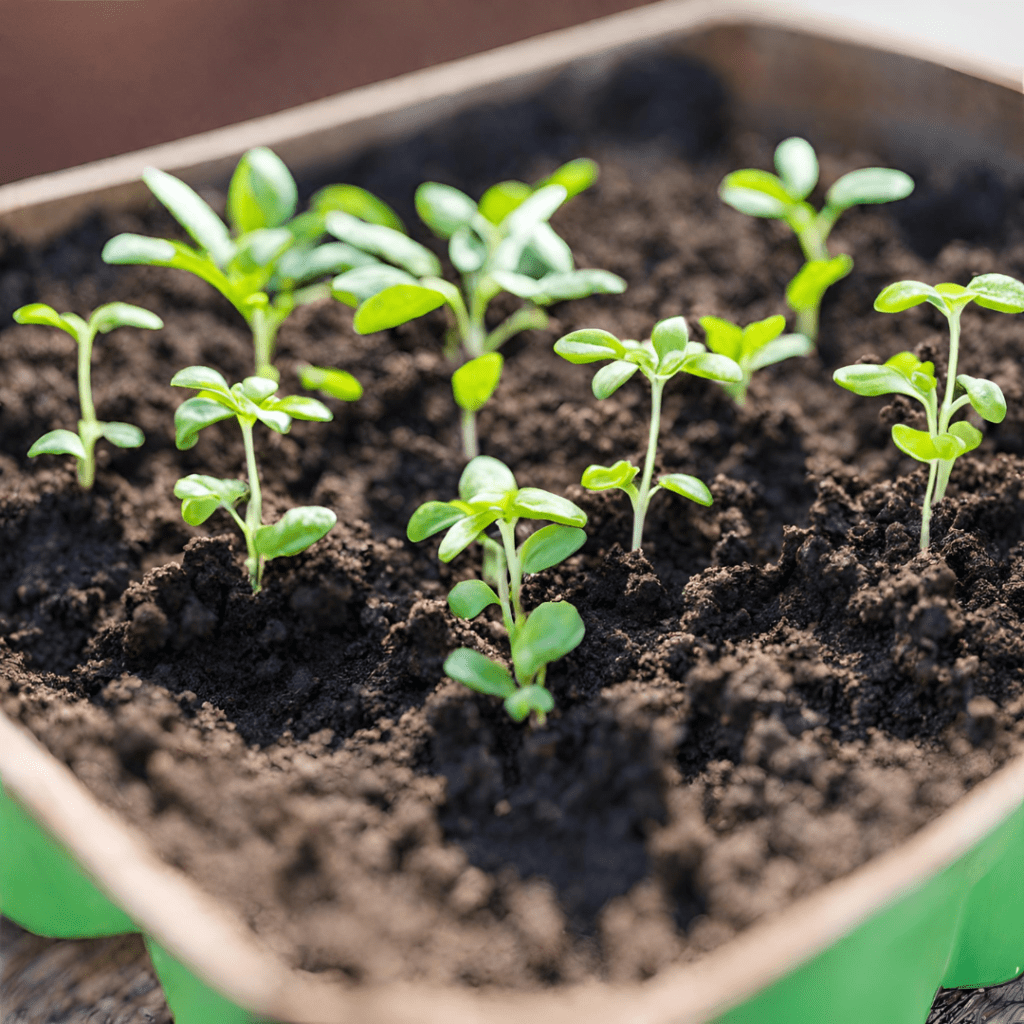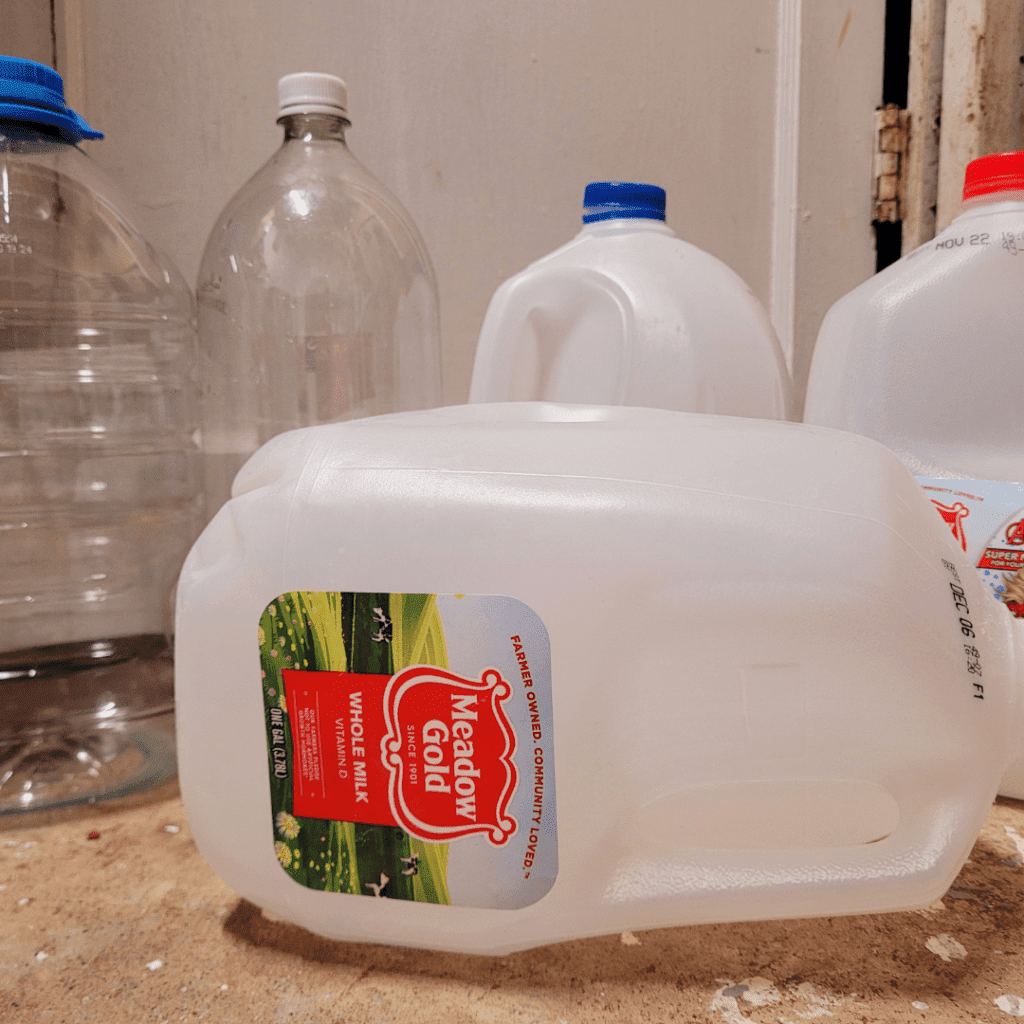Why winter sowing is a game changer for successful spring planting lies in its ability to produce hardy, weather-tough seedlings without grow lights or indoor space. By sowing seeds outdoors in containers during winter, your plants naturally adapt to seasonal changes, sprout at the right time, and save you money while ensuring a strong, resilient spring garden.
Winter sowing is a game-changer when it comes to successful spring planting. It is an innovative technique that allows gardeners to get a head start on their gardening season by sowing seeds outdoors during the winter months. This method harnesses the power of natural winter conditions to stratify seeds and promote healthy germination once spring arrives. Not only does winter sowing extend the growing season, but it also offers numerous benefits such as cost-effectiveness, sustainability, and the production of hardy seedlings.
In this article, I will delve into the world of winter sowing, exploring its benefits, essential supplies and techniques, selecting the right seeds, strategies for different plant types, managing and caring for winter-sown seeds, transitioning the seedlings, and showcasing success stories and tips from experienced winter sowers. Get ready to revolutionize your spring planting with the incredible technique of winter sowing.
This is a pinnable post. Tap or hover over any image in this post to pin to your Pinterest Boards.
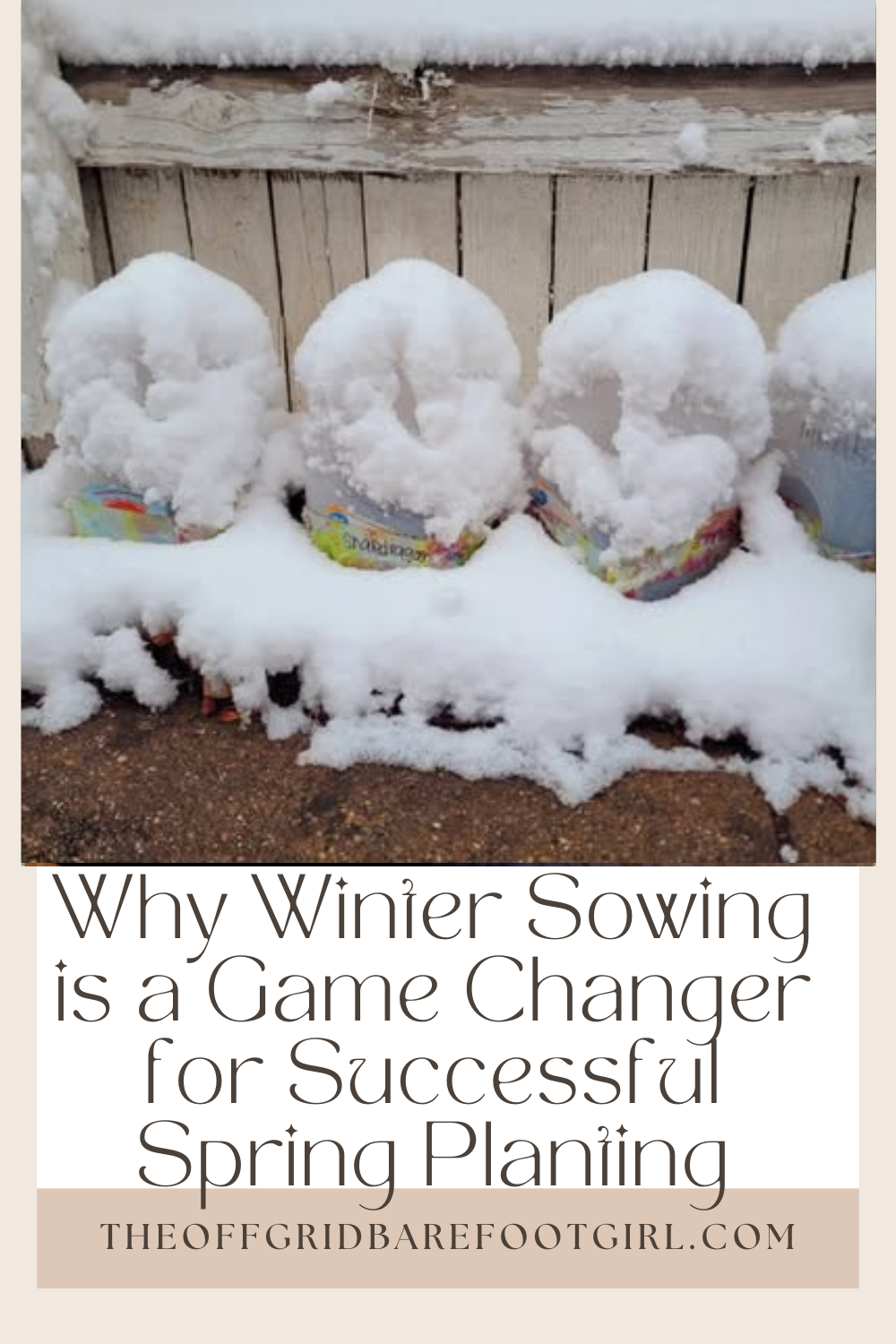
Introduction to Winter Sowing: An Innovative Approach to Spring Planting
What is Winter Sowing?
Winter sowing is like the Houdini of gardening techniques. It’s a clever way to get a head start on your spring planting without the need for a fancy greenhouse or expensive equipment. Instead, you use simple containers and the magic of winter to sow your seeds!
The Origins and Benefits of Winter Sowing
Winter sowing has been around for ages, but it’s gaining popularity among gardeners who want to save time, money, and sanity. This method is said to have originated from gardeners who would sow their seeds in milk jugs and leave them outside during the winter months. It turns out, Mother Nature knows a thing or two about nurturing seeds for a successful spring bloom.
The Benefits of Winter Sowing for Successful Spring Planting
Extended Growing Season
With winter sowing, you’re not limited to the short growing season of spring and summer. By starting your seeds outdoors in the winter, you give them a head start and extend the growing season. It’s like adding extra hours to your workday without having to sacrifice sleep.
Cost-Effectiveness and Sustainability
Gardening can be an expensive hobby, but winter sowing helps you save some green (pun intended). You don’t need expensive equipment or artificial lighting to get your seeds going. Plus, by reusing containers like milk jugs or 2-liter bottles, you’re reducing waste and giving a second life to everyday items.
Hardy and Healthier Seedlings: Winter Sowing for Spring Planting
Winter-sown seedlings are like the Hulk version of plants. They develop stronger root systems and are more resilient to the elements. These tough little guys are less likely to suffer from transplant shock when you finally move them to their permanent outdoor homes. It’s like giving your plants a personal trainer to whip them into shape.
Getting Started: Essential Supplies and Techniques for Winter Sowing
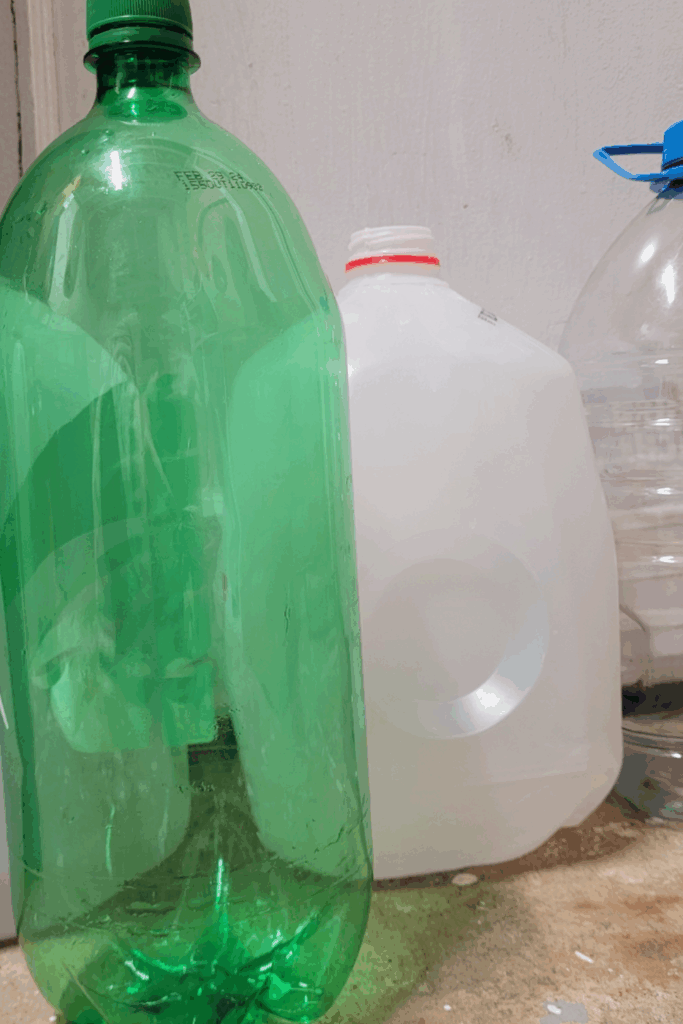
Selecting the Right Containers for Winter Sowing
When it comes to containers for winter sowing, you’re truly spoiled for choice. From milk jugs to 2-liter bottles to takeout containers, almost anything can be repurposed into a cozy home for your seeds. Just make sure they have drainage holes and can withstand the winter elements, and are clear for sunlight to enter.
Preparing the Soil Mix for Winter Sowing
Good soil is the secret sauce to successful winter sowing. You’ll want a mix that’s light, well-draining, and nutrient-rich. You can buy pre-made potting mixes or create your own by mixing compost, vermiculite, and peat moss. Just remember, plants don’t like cakes, but they do appreciate a delicious soil mix.
Properly Sowing the Seeds: Winter Sowing for Spring Planting
Sowing seeds in winter requires a delicate touch, like spreading peanut butter on a cracker without breaking it. You’ll want to scatter the seeds evenly on the soil surface and lightly press them down. Don’t bury them too deep or leave them exposed.
Selecting the Right Seeds for Winter Sowing
Annuals, Perennials, and Vegetables Suitable for Winter Sowing
Winter sowing allows you to grow a wide variety of plants, from beautiful annual flowers to delicious veggies. So whether you want a vibrant garden or a bountiful harvest, there’s a seed out there with your name on it. Well, not literally, but you get the idea.
Choosing Cold-Tolerant and Hardy Varieties
Winter can be harsh, but some plants are like the tough sheriffs of the plant world. Look for seeds that are labeled as cold-tolerant or hardy. These plant warriors can withstand everything winter throws at them, from frosty nights to chilly winds.
Understanding Seed Stratification and Scarification
Seeds have their own set of rules, and some can be a bit picky about how they’re treated. Stratification and scarification are fancy terms for giving certain seeds a little nudge to wake them up from their winter slumber. Soaking, chilling, or roughing up the seed coat can help improve germination rates. You will be helping them better prepare for spring.
Winter Sowing Strategies for Different Plant Types
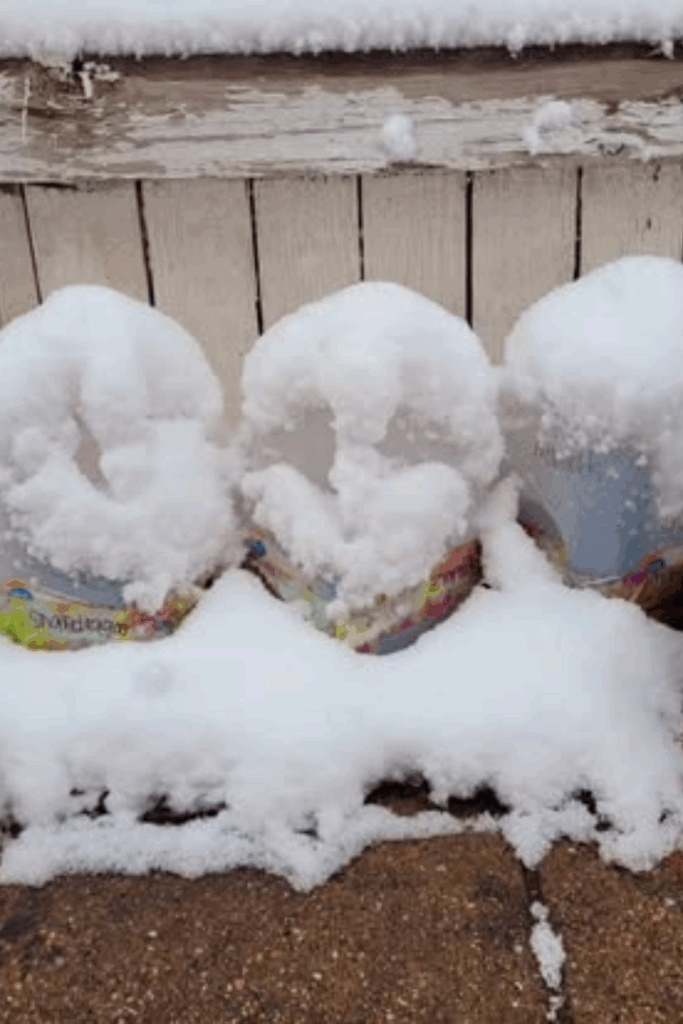
Flowering Plants and Ornamentals
When it comes to winter sowing flowering plants and ornamentals, there are a few key strategies to keep in mind. First, choose seeds that are appropriate for your growing zone and the amount of sunlight your garden receives. Some popular choices include pansies, snapdragons, and cosmos.
Before sowing the seeds, make sure to prepare the containers properly. Fill them with a good-quality potting mix and moisten them slightly. Scatter the seeds on top of the soil, following the packet instructions for spacing. Cover the seeds lightly with a thin layer of soil and water gently.
Herbs and Vegetables: Winter Sowing for Spring Planting
Winter sowing herbs and vegetables can give you a head start on your spring garden. Popular options include spinach, lettuce, and herbs like parsley and cilantro.
To get started, choose seeds that are suitable for winter sowing and match your growing zone. Fill your containers with a well-draining potting mix and sow the seeds according to the packet instructions. Remember to label the containers, so you know what you’re growing.
Trees and Shrubs: Winter Sowing for Spring Planting
Believe it or not, you can even winter sow trees and shrubs! This method is particularly useful for native species or hard-to-germinate seeds. Some examples of trees and shrubs that can be winter-sown include dogwoods, birches, and butterfly bushes.
Preparation is key when winter sowing trees and shrubs. Start by collecting seeds from the plants or purchasing them from a reputable source. Prepare your containers with a suitable potting mix and sow the seeds according to their specific requirements. Keep in mind that tree and shrub seeds often require a period of cold stratification before they will germinate, making winter sowing the ideal option.
Managing and Caring for Winter Sown Seeds during the Winter Months
Providing Adequate Water and Drainage
While winter sowing requires less maintenance than traditional indoor seed starting, it’s still important to provide adequate water and drainage for your seeds. Make sure your containers have drainage holes to prevent waterlogged soil. Water the containers when the soil feels dry, but be careful not to overwater. Remember, the containers are outside, and excess water can freeze and damage the seeds.
Protecting the Seeds from Extreme Weather Conditions: Winter Sowing for Spring Planting
Winter weather can be unpredictable, so it’s crucial to protect your winter-sown seeds from extreme conditions. Consider using mini greenhouses or clear plastic bags to cover the containers and create a miniature winter wonderland for your seeds. These covers will help retain moisture and provide some insulation during cold snaps.
Monitoring and Controlling Pests and Diseases: Winter Sowing for Spring Planting
While pests and diseases are less common during the winter months, it’s still important to keep an eye out for any signs of trouble. Check your containers regularly for signs of pests like aphids or diseases like damping-off. If necessary, take appropriate measures to control the issue, such as using organic pest control methods or removing affected seedlings.
Transitioning the Seedlings: Preparing for Spring Planting
Hardening Off the Seedlings: Winter Sowing for Spring Planting
As spring approaches, it’s essential to gradually acclimate your seedlings to the outdoor conditions. This process, known as hardening off, helps prevent transplant shock. Start by removing the tops of the containers to expose the seedlings to the outdoor temperatures in a sheltered spot for a few hours each day, gradually increasing their exposure to the outdoor temperatures without the tops over the course of a week.
Transplanting the Seedlings into the Garden
When the seedlings are ready to be transplanted, choose a suitable location in your garden. Prepare the soil by removing any weeds and loosening it with a garden fork. Dig a hole large enough to accommodate the root ball of the seedling. Gently remove the seedling from its container, being careful not to disturb the roots, and place it into the hole. Fill in the soil around the seedling, firming it gently.
Additional Care for Seedlings After Transplanting: Winter Sowing for Spring Planting
After transplanting, make sure to provide proper care to ensure the success of your winter-sown seedlings. Water the seedlings deeply, but infrequently to encourage the development of deep roots. Mulch around the seedlings to help conserve moisture and suppress weeds. Keep an eye out for any signs of stress or pests and take appropriate action to address them.
Success Stories and Tips from Experienced Winter Sowers
Finally, let’s hear some success stories and tips from experienced winter sowers:
- Emily from Vermont shared that she successfully winter-sowed a variety of wildflowers, and they bloomed beautifully in the spring. She recommends researching which seeds are native to your area for the best results.
- Tom from Oregon suggests starting small and experimenting with different types of seeds to discover what works best in your particular region and climate.
- Sarah from Colorado advises labeling your containers clearly and keeping a journal of your winter sowing experience. This way, you can learn from your successes and make adjustments for the next season.
Conclusion
Remember, winter sowing is a fun and rewarding way to get a jumpstart on your spring planting. Don’t be afraid to try something new and experiment with different plants.
In conclusion, winter sowing is a game-changer for successful spring planting. By embracing this innovative technique, gardeners can enjoy an extended growing season, save money, and produce healthy and robust seedlings. With the right supplies, careful seed selection, and proper care throughout the winter months, you can reap the rewards of winter sowing and experience an abundance of beautiful plants and bountiful harvests come spring. So, give winter sowing a try and witness the transformation it brings to your gardening journey.
I love the way Joe Gardener does his winter sowing, and you can check him out over at his site for more inspiration! Joe Gardener’s Winter Sowing Techniques!
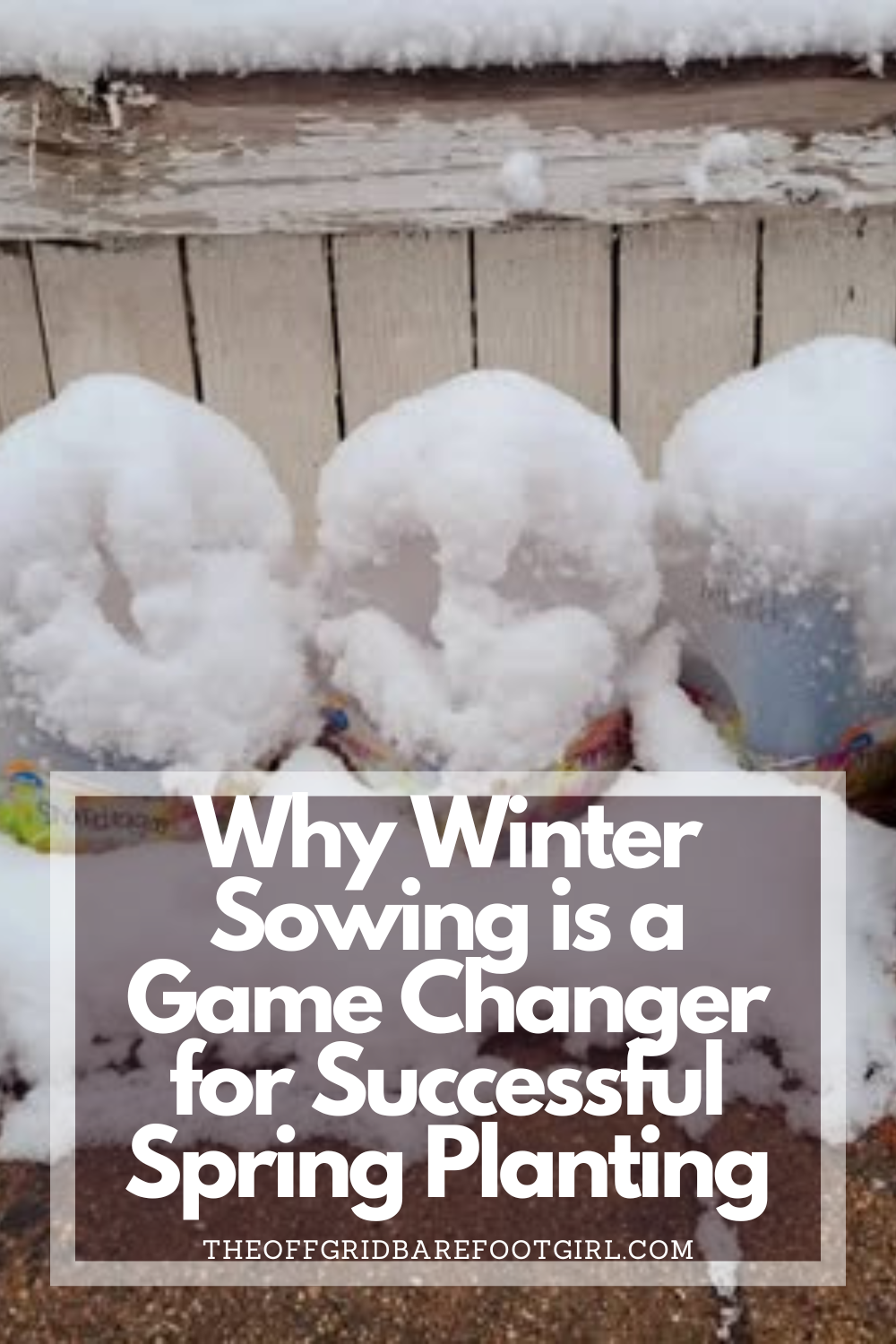
Frequently Asked Questions
1. Can I winter sow any type of seed?
Yes, winter sowing works well with a wide range of seeds, including annuals, perennials, vegetables, herbs, and even trees and shrubs. However, it is important to select seeds that are appropriate for your growing zone and can withstand the winter conditions in your area.
2. Do I need any special equipment or supplies for winter sowing?
While winter sowing does not require any specialized equipment, there are a few supplies that can make the process easier. You will need containers with good drainage, transparent lids or covers to create a mini-greenhouse effect, a suitable soil mix, and labels to keep track of your sown seeds. Additionally, having access to a water source and protective materials such as mulch or row covers can be beneficial.
3. How do I know when to transition the seedlings for spring planting?
Timing the transition of seedlings depends on various factors such as the specific plant variety, local climate, and frost dates. As a general rule, seedlings should be hardened off gradually by exposing them to outdoor conditions for increasing periods over several weeks. Once the danger of frost has passed and the seedlings have acclimated to outdoor conditions, they can be transplanted into the garden.
4. Can I winter sow in all regions?
Winter sowing is suitable for most regions and can be adapted to different climates. However, it may require some adjustments based on your specific location. In colder regions with heavy snowfall, extra protection and insulation may be needed for the containers. In warmer regions, selecting appropriate plant varieties and ensuring proper ventilation to prevent overheating may be necessary. It is important to research and understand the specific requirements of your region to achieve the best results with winter sowing.
Summary
I hope I have inspired you to try your skills at winter sowing with these tips and products.
If you were encouraged by this post, I invite you to check out my FREE Printables Page for fun free printables, planners, and charts.
ENTER MY FREE Printables Page HERE
Here are some more of my winter gardening inspiration posts to check out!
The Benefits of Successful Winter Sowing for Vegetables in Containers
The Ultimate Guide to Choosing the Best Soil for Winter Sowing
Planning Your Garden: How to Plan a Vegetable Garden: Expert Green Thumb Tips!
Winterizing the Garden: How to Winterize Your Vegetable Garden: Step-by-Step Checklist
Mulching the Garden: How to Make Leaf Litter Mulch
How to Grow a Fall Garden: 9 Best Fall Crops
Blessings,
The Off Grid Barefoot Girl



